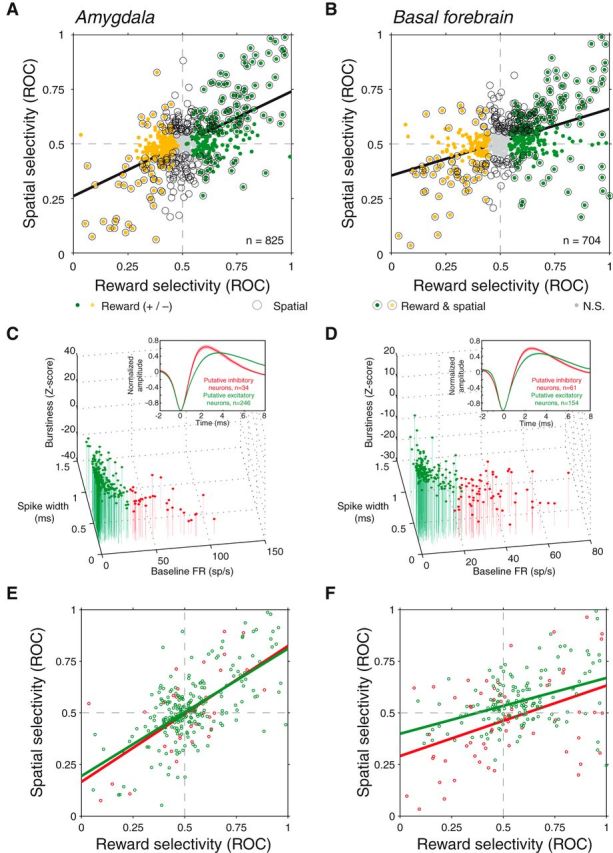Figure 3.

Reward and spatial selectivity are correlated in a similar manner in amygdala and BF and among putative excitatory and inhibitory neurons. A, Reward selectivity and spatial selectivity indices are positively correlated for amygdala neurons (p < 10−66). Plot style indicates the significance of each (see legend). B, Reward selectivity and spatial selectivity indices are positively correlated for BF neurons (p < 10−32). C, D, Classification of neurons based on baseline firing rate, spike width, and burstiness. A k-means algorithm was used to divide the population of amygdala (C) and BF (D) neurons into putative excitatory (green) and inhibitory (red) neurons. Insets, Population average waveforms for each group; waveforms were valley normalized before averaging and the shaded region indicates the SE across neurons. E, F, Relationship between reward and spatial selectivity as in A and B for putative excitatory (green) and inhibitory (red) neurons. Regressions were significant in each case (p < 0.001).
